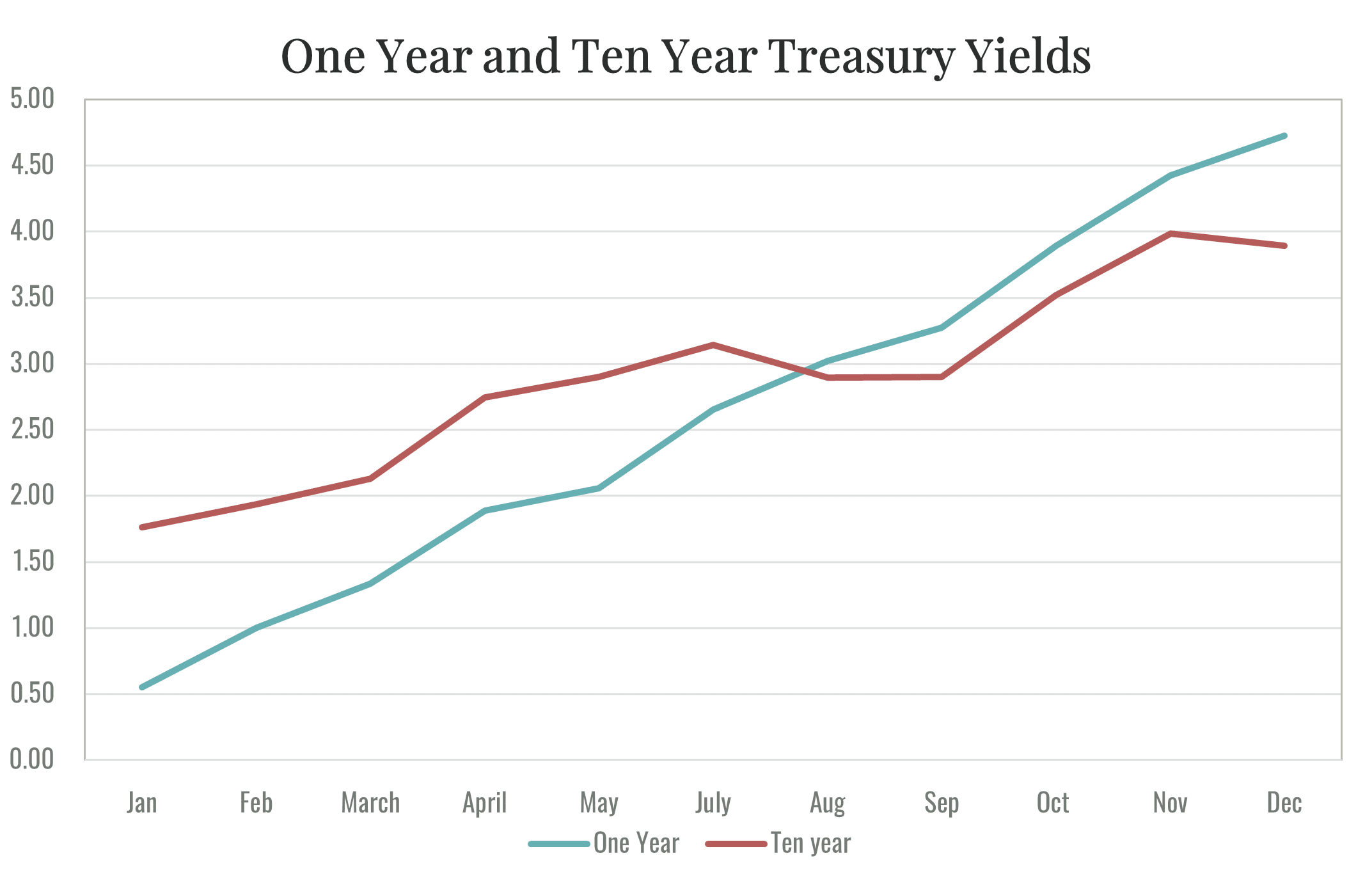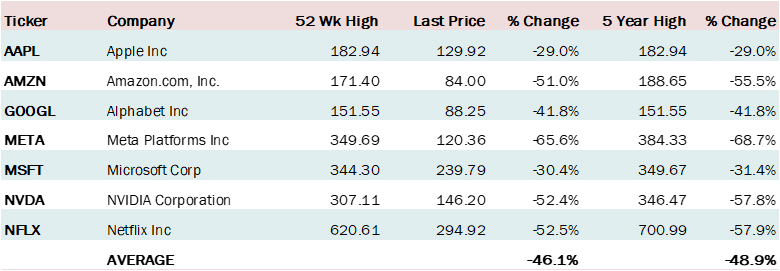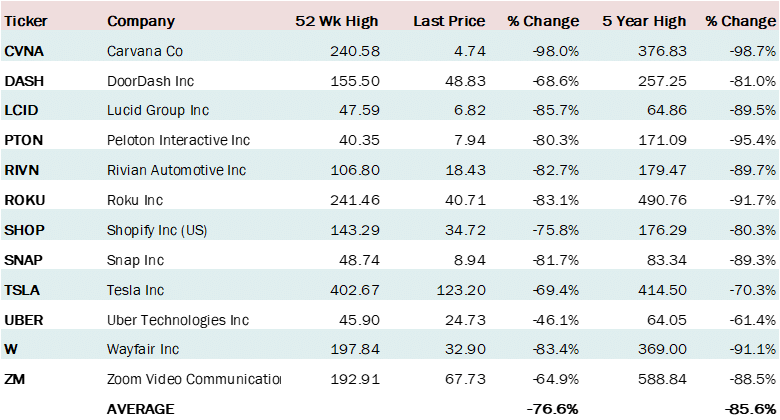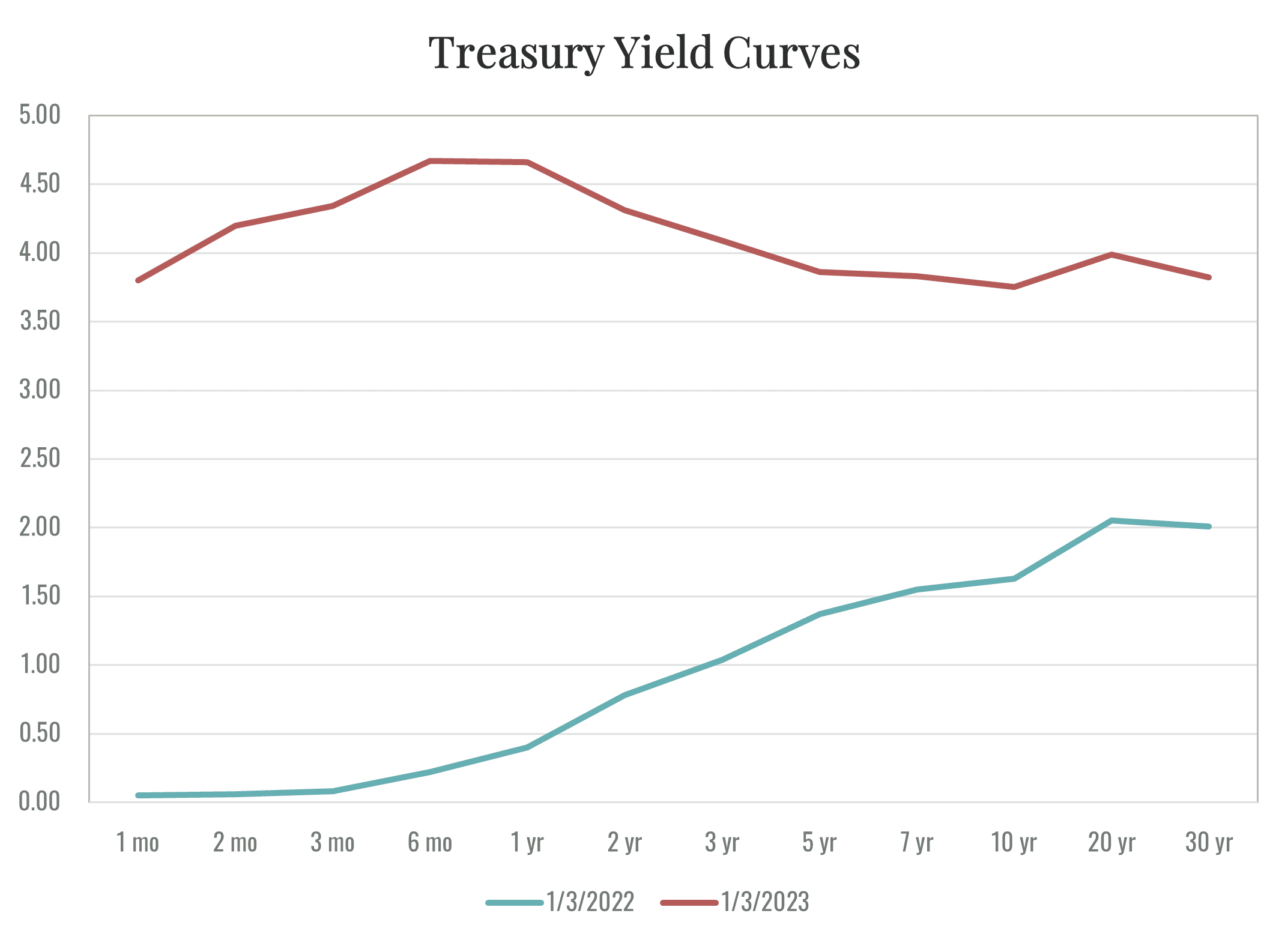The Continuing Market Melt-up The third quarter sustained the upward momentum in the market, which…
Investor Memo Q4 2022: Valuation Comes Home to Roost
Retrospective
As 2021 came to an end, the stock market party was going strong. The S&P 500 index closed at 4766.18 up 1,010 points or 26.9% for year to within a hair’s breadth of its all-time high. The Dow Jones (36,338) and the NASDAQ (15,645) indexes also closed near record highs. Most analysts were predicting further increases in 2022. For instance, in January 2022 CNBC reported a summary of year-end targets for the S&P 500 by leading strategists as shown below.

At the Cornell Capital Group we were not so sanguine. As we stressed repeatedly in our quarterly memos and in our Reflections on Investing videos, the key to rational investing is a comparison of price with fundamental value. In our view, fundamental values at close of 2021 fell short of price. Therefore, in our year end 2021 memo, we stated that:
In a market where valuations remain frothy this means a strategy of carefully comparing price and fundamental value and selective hedging.
This led us to conclude that:
Putting all the pieces together, our bywords for 2022 are caution, value, and risk management. 2021 rewarded investors with what was a largely smooth increase in stock prices. In our view, 2022 will not be so kind.
The concern about valuation turned out to be prescient. Instead of continuing to rise, the market fell sharply. The S&P 500 finished the year at 3839.50, down 19.44%. The Dow Jones and the NASDAQ dropped 8.78% and 33.10%, respectively. Much of our concern regarding fundamental valuation was related to interest rates. We noted that:
In our view, the current situation is not an equilibrium. With real rates on government debt at minus 6%, we can see why many investors feel there are no alternatives to equities or junk debt. If inflation stays at this level, rates will have to rise, either because of a change in Fed policy or because investors will no longer accept nominal yields of 1.5%. When rates do move, the impact on the market is likely to be significant.
We added that:
A Treasury yield near zero combined with an inflation rate of 6.8%, resulting in a negative real rate of 6.7%, is something that has never been previously observed.
As we feared, interest rates did rise sharply in 2022 in large part because of a shift in Fed policy to fighting inflation. The chart below plots the yield on both one-year and ten-year Treasury securities. The ten-year rate more than doubled while the one-year rate jumped by a factor of 9!

Finally, at the start of 2022, we viewed some sectors of the market as being particularly frothy. A prime example was electric vehicle stocks. In a report published in November 2021 entitled Valuing the Automotive Industry, we concluded that:
Over the next decade, it will be difficult for investors in auto manufacturers to earn meaningfully positive stock returns with the outlook for investment in electric vehicle specialists being particularly bleak.
For that reason, in 2022 we sold call options on Tesla to hedge both market and EV related risk.
In summary, 2022 was the year that valuation came home to roost with the highest fliers tending to drop the most. As the table below shows even “big tech” was hard hit – down an average of 46.1% from the highs of the year. A sample of well-known companies alleged to be disruptors dropped more – an average of 77.8%. Tesla’s market capitalization fell by more than the sum total of the values of the five largest traditional automakers.


The observed performance in 2022 should not be taken to imply that valuation is a short-run predictor of stock price movements. Study after study have shown that short-run stock price movements, even over the course of a year, are primarily random noise. Nonetheless, over the long run valuation matters. There is no better predictor of long-run returns. 2022 just happened to be a year that valuation came home to roost.
Fixed Income
When 2022 began we were eschewing all fixed income investments. The reason was simple – the risk/return tradeoff was dreadful. As shown by the Treasury yield curve below, at the start of the year yields on short-term Treasuries were near zero and increased only to 1.63% at a maturity of ten years – hardly attractive returns. Furthermore, for the longer-term Treasuries there was also significant price risk. If inflation and/or a shift in Federal Reserve policy led to higher interest rates, as we feared both would, the result would be capital losses on long-term fixed income securities.

By early April, the yield on the ten-year Treasury had risen to 2.4%. At that time, we did a reflections on investing episode addressing fixed income. We concluded that while the environment had improved, the risk/return tradeoff provided by fixed income securities still failed to justify investment.
As the year progressed, rising inflation and increasingly restrictive Federal Reserve policy led to higher interest rates and an inverted yield curve as shown in the previous chart. At the higher rates that exist today, fixed income re-enters the picture as an attractive investment, particularly for more risk averse clients, but at what maturity? Given the inverted yield curve, rates on short-term investments exceed those on long-term investments. But purchasing short-term securities means reinvesting in a year or two at possibly much lower rates. Buying long-term securities locks in the current rate, but if inflation proves to be more resilient than expected, long-term rates will likely rise leading once again to capital losses. For these reasons, at the Cornell Capital Group we carefully analyze the yield curve and discuss the implications with our clients before making fixed income investments.
What Does All This Mean for 2023
It is tempting to conclude that drop in prices in 2022 means that stocks are now a bargain auguring healthy returns in 2023. That is not what our fundamental analysis indicates. Following the approach we described in our video on Valuing the S&P 500, our estimate of the fundamental value for the index at year end came to approximately 3800, not far from the closing market price of 3839.50.
This makes 2023 a difficult year because there is no clear stock market valuation signal overall. However, this does not mean there are no stocks that offer attractive opportunities. Using our proprietary discounted cash flow valuation models, we have our eyes on several and are currently examining the details. But it does mean we will proceed with caution and continue to use options to manage the risk/return tradeoff.
The investment environment is further complicated by the rising attractiveness of fixed income securities. When yields on one-year, high quality fixed income securities were less than 1% fixed income investment made little sense to us. But at 5% it is a different story. Stocks must offer more attractive expected returns if 5% can be earned with near certainty. We will be examining the tradeoff carefully this year.
Conclusion
As 2022 came to an end, investors were no longer willing to pay sky-high prices for the most speculative assets. Valuations came to the fore once again. This is welcome news. As we move into 2023, the Cornell Capital Group will remain focused on rigorous fundamental valuation analysis to uncover opportunities where stocks can be purchased at prices less than fundamental value. With the market down, more such opportunities are beginning to emerge. Nonetheless, a word of caution is in order. During the halcyon days of 2020 and 2021, companies such as Tesla, with stock prices in excess of what we estimated to be fundamental value, continued to rise. Now the risk is reversed. Companies for which prices are less than our estimates of fundamental value could continue to decline in the short run. That is why continued risk management is important. We remember Warren Buffett’s first rule of investing – Don’t lose money.
This memorandum is being made available for educational purposes only and should not be used for any other purpose. The information contained herein does not constitute and should not be construed as an offering of advisory services or an offer to sell or solicitation to buy any securities or related financial instruments in any jurisdiction.


